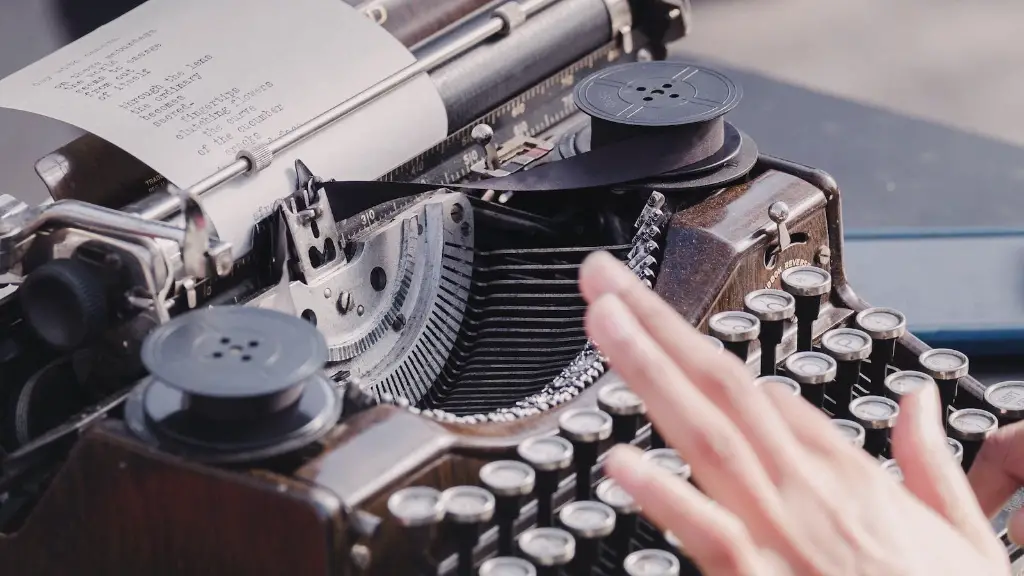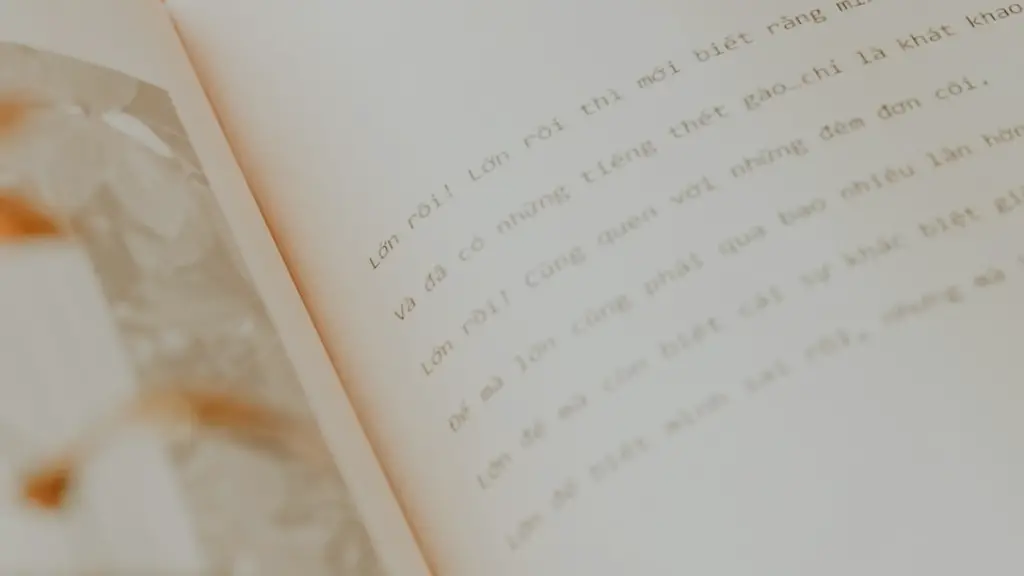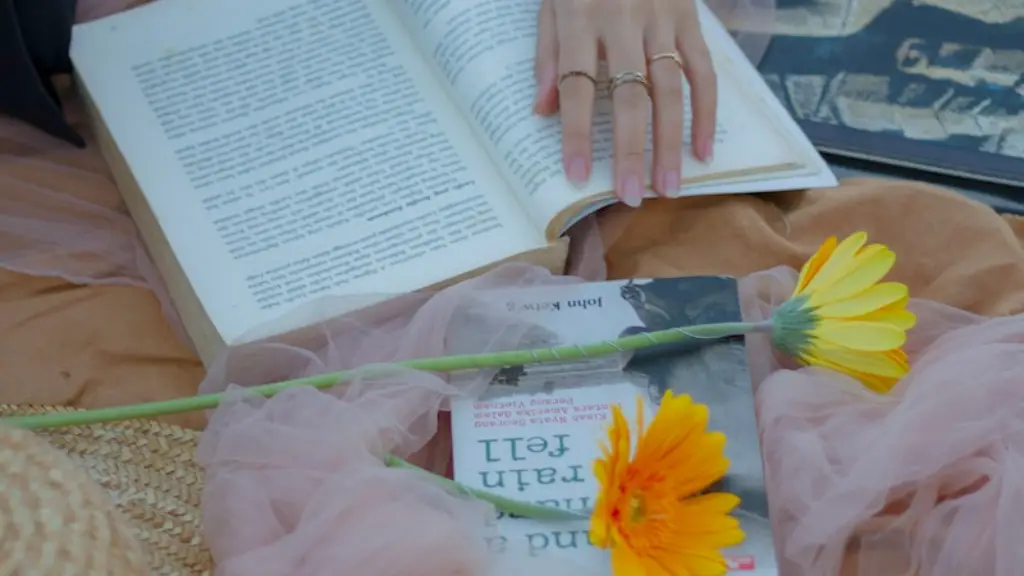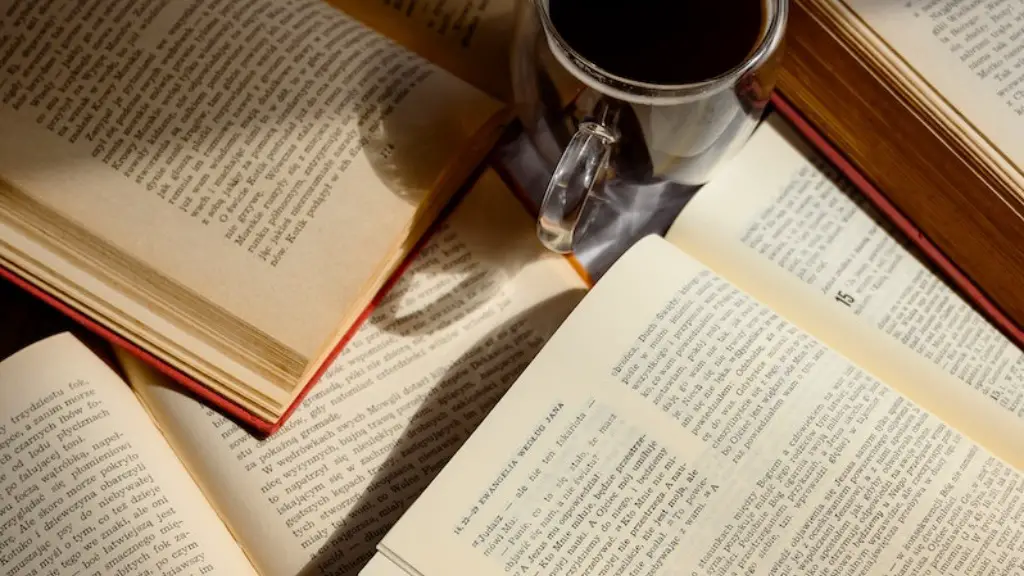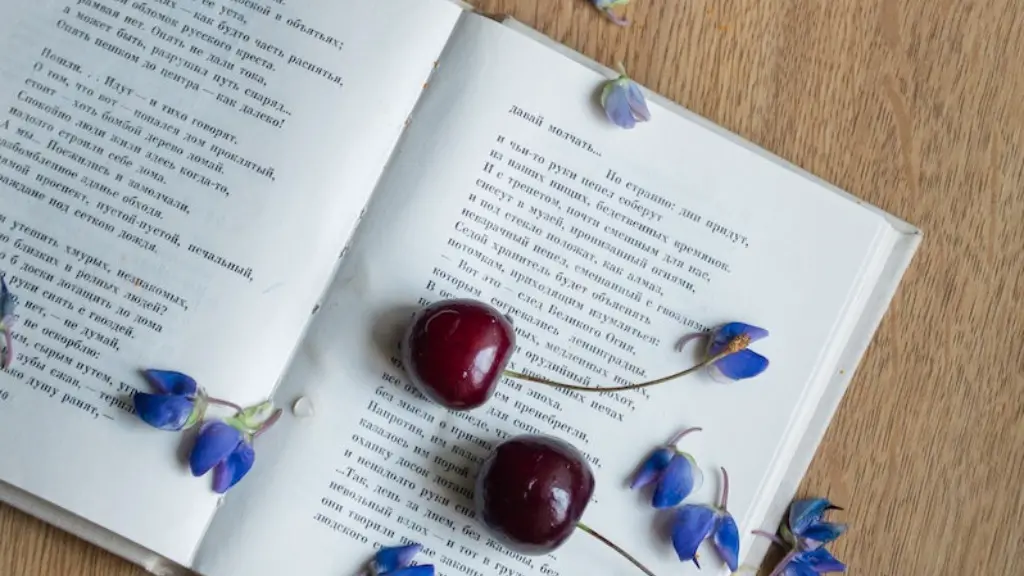Consonance in poetry is the repetition of consonant sounds within the lines of verse, typically at the ends of words. It’s a poetic device often used to create a feeling of rhythm, unity and internal rhyme in a poem. Consonance can be seen as a kind of internal alliteration and is used by poets to lend a lyrical or musical quality to their poetry. This playfulness with language can be used to add to the imagery and meaning of the poem, such as with the repetition of a key phrase.
One of the most common types of consonance in poetry is end rhyme, which is when the ending consonants of two or more words rhyme with each other. This type of consonance creates an obvious connection within a poem and a smooth, flowing rhythm. An example of this is seen in this line from Robert Frost’s poem “Stopping By Woods On A Snowy Evening”:
“The woods are lovely, dark and deep.”
In this line, the ending consonants of “woods” and “deep” both rhyme and create a pleasing sound effect. End rhyme is commonly used in form poems such as sonnets and ballads, as it creates a sense of structure and rhythm with the repeated consonants.
Another type of consonance in poetry is internal or mid-line rhyme, which involves the repetition of consonants or consonant clusters within a line. Internal rhymes have been used by poets throughout history to break up lines of verse and create a sound and rhythm that captures the reader’s attention. An example of this type of consonance can be seen in the line from William Shakespeare’s “Sonnet 18”:
“So long as men can breathe or eyes can see,
So long lives this and this gives life to thee.”
In this line, the consonants “th” and “ee” are repeated, creating an internal rhyme and a pleasing sound that draws the reader in. Internal rhyme can also be used to link two parts of a sentence, phrase or thought together.
Consonance can also be used in conjunction with assonance, which is the repetition of vowel sounds, to create a combination of sounds, or a ‘slant rhyme’. Slant rhyme is composed of either slightly similar, or completely different vowel and consonant sounds and is used to create a unique sound in the poem. An example of this type of consonance can be seen in W.H. Auden’s poem “Musée des Beaux Arts”:
“About suffering they were never wrong,
The Old Masters: how well they understood
Its human position; how it takes place.”
In this line, the consonant sound “s” is repeated and linked with the similarly sounding “z” in the word “place”, creating a subtle rhyming effect that helps to emphasise the message of the poem. Slant rhyme is often used in modern poetry to create an interesting sound and to break up the lines of verse.
In summary, consonance in poetry is the repetition of consonant sounds at the beginning, middle or end of words. It’s used to create an internal rhyme, to link two parts of a sentence or phrase together, or to add a subtle sound to a poem. End rhyme and internal or mid-line rhyme are the most common types of Consonance used in poetry, but Slant rhyme is also used to create a unique and interesting sound. Consonance is an important poetic device that can be used to add a lyrical or musical quality to a poem, to draw the reader in, and to add to the imagery and meaning of the work.
When to Use Consonance in Poetry
Consonance is an important poetic device for any poet to know how to use effectively. It can be used to create a lyrical effect in a poem, to provide a rhythm to the poem and to give the words a musical quality. Poets will often use consonance to create a connection between words or phrases, to emphasise a particular sound or idea, or to break up the lines of verse. Consonance can be used to add a subtle sound or to create a distinct pattern in a poem.
When using consonance, it’s important to be careful not to overuse it or to use it too repetitively. If used too often, the repetition of consonants can become tiresome to the reader and create a monotone effect. Poets must also be careful to choose the right words for a line, to ensure that the consonance created is meaningful and contributes to the poem. For example, a poet may choose to use a single word such as “night” in a line to create a connection between the darkness and the starlight, or to emphasise a particular sound or idea.
Using consonance in poetry can create a pleasing rhythm and sound that the reader will find enjoyable. It can help to add to the overall meaning of the poem by connecting different ideas, words or phrases together and by emphasising certain sounds or concepts. Consonance can also be used to draw the reader in and to help create a vivid and memorable image of the poem.
The Effect of Consonance in Poetry
The use of consonance in poetry can have a variety of effects on a poem. It can draw the reader in and create a pleasing sound, which can then be used to emphasise certain emotions, ideas or images. It can also be used to connect different aspects of a poem together or to create a rhythm or musicality to a poem. This in turn can help the poem to be more memorable and powerful, as the sound will be embedded in the reader’s memory.
The effect of consonance will also depend on the particular poet’s style. Some poets may prefer to use end rhyme and internal verse, while others might opt for slant rhyme and more subtle sounds. It’s important for any poet to consider their audience and the theme of their poem when selecting the type of consonance to use. This will help the poet to create a more meaningful poem and to ensure that their words have the desired effect.
The History of Consonance in Poetry
Consonance has a long and varied history in poetry. It was first used in ancient Greek and Latin poetry, and has been used as a poetic device throughout history by poets such as Chaucer, Shakespeare, Wordsworth and Auden. Over time, the use of consonance has varied and evolved, as poets have experimented with different types of sounds and rhymes. In the 20th century, poets such as T. S. Eliot and Robert Frost embraced the use of consonance to create more complex rhythms and sounds in their poetry, creating a new and exciting way to express ideas.
Today, consonance is still a popular poetic device and is used by many contemporary poets. It can still be used to create a lyrical or musical effect in a poem, to connect two words or concepts together, or simply to add a subtle sound. It’s an important tool for any poet and can be used to create powerful and memorable poetry.
The Role of Consonance in Poetry
The role of consonance in poetry is to add an audible and lyrical element to the poem. By using consonance, poets can create a pleasing rhythm and a unique sound that sets their poem apart from others. Consonance can be used to connect two parts of a sentence or phrase, to emphasize a sound or idea, or to break up the lines of verse. It can also help to create a vivid and memorable image of the poem and to bring out certain emotions or ideas.
The use of consonance in poetry can have a powerful effect on the reader. It can help the reader to form a connection with the words and create a more meaningful experience. Consonance can also help to draw the reader into the poem and to create a vivid image of the words and ideas presented. It’s a useful tool for any poet and can be used to create meaningful and powerful poetry.
Tips For Using Consonance in Poetry
When using consonance in poetry, it’s important to be mindful of its effects on the poem. Too much repetition or a lack of variety can make the poem seem monotonous and detract from its effect. It’s also important to consider the words and phrases that the poet chooses, to ensure that the consonance created enhances the overall meaning of the poem.
It can also be helpful to experiment with different types of consonance, such as end rhyme, internal rhyme and slant rhyme. This can help the poet to create a more interesting sound and to find a pattern that works for their poem. Finally, it’s important to be aware of the audience for the poem and to consider the theme of the poem when selecting the type of consonance to use.
